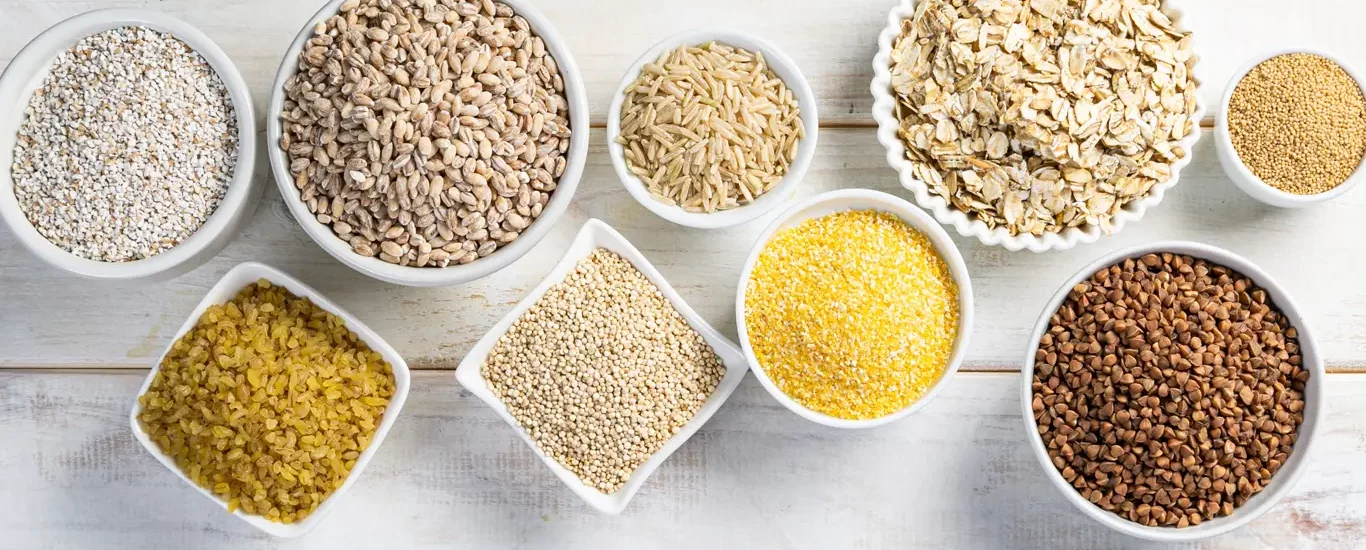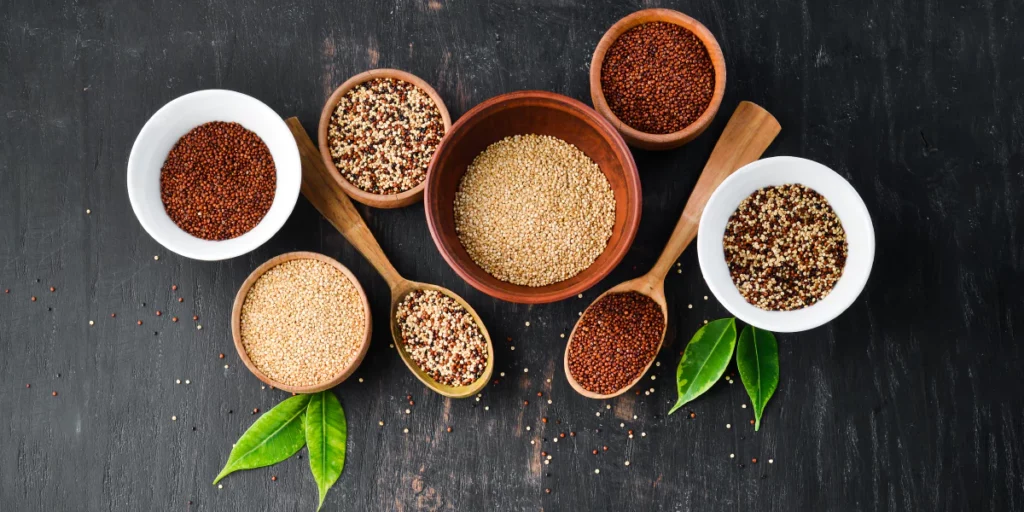

wordpress-seo domain was triggered too early. This is usually an indicator for some code in the plugin or theme running too early. Translations should be loaded at the init action or later. Please see Debugging in WordPress for more information. (This message was added in version 6.7.0.) in /home/sehatnagar.com/public_html/wp-includes/functions.php on line 6114
Losing weight and looking smart is the wish of every human being. Sometime, many people lose their health in achieving the goal of weight loss. If you’re also looking to lose weight and improve your overall health. But don’t know how to achieve this goal. You are visiting the right place. SehatNagar will advise you to consider adding millets to your diet. However, the purpose of today’s article is to inform you, how millets are helpful for weight loss. In this article, we’ll explore how millets can aid weight loss and some of the best ways to incorporate them into your diet. So, let’s start by reading this article.
Millets are a group of ancient grains that have been consumed for thousands of years in many parts of the world. They are rich in fiber, protein, vitamins, and minerals, and have a low glycemic index, which means they release glucose into the bloodstream slowly, keeping you feeling fuller for longer periods of time.
Millets are also gluten-free, making them a great option for people with celiac disease or gluten sensitivity. They come in different varieties, including pearl millet, foxtail millet, finger millet, and sorghum, among others.
Millets have several properties that make them great for weight loss. First, they are high in fiber, which promotes satiety and reduces the likelihood of overeating. A diet rich in fiber has been linked to lower body weight, body mass index (BMI), and waist circumference. Millets also have a low glycemic index, which means they release glucose slowly into the bloodstream, preventing spikes in blood sugar levels that can trigger hunger and cravings.
However, millets are also a good source of protein, which is essential for building and repairing muscles and maintaining a healthy metabolism. Studies have shown that increasing protein intake can help reduce calorie intake, increase feelings of fullness, and promote weight loss. Millets also contain essential vitamins and minerals, such as iron, calcium, magnesium, and phosphorus, which play a crucial role in various bodily functions and can aid weight loss by improving overall health.
As per the USDA, one hundred grams of raw millet has the following nutritional composition.
Millets are versatile and can be used in a variety of dishes, including salads, soups, stews, and baked goods. Here are some ideas for incorporating millets into your diet:

Regarding weight loss foods, the often debated discussion is the choice between brown rice and millets. While brown rice is high in carbohydrates, millets have more protein and fats. In addition, studies have shown that the iron content in millets contributes most of the Recommended Daily Allowance (RDA) per 100gm, making it a healthier choice.
One must also remember that cutting out rice entirely from your diet is not recommended. While you can use millets more often, having both grains in their proper amounts for weight loss is better.
When choosing between quinoa and millet, both are healthy with various health benefits.
Quinoa is a super grain, but it can be expensive. Hence, it may not fit into everyone’s dietary budget. On the other hand, millets are gluten-free, cost-effective, and also aid in weight loss.
But why choose millet over other grains? Millets have a low glycemic index, which releases glucose slowly into the bloodstream, keeping you fuller for extended periods. That makes them a fantastic option for weight loss.
All millets are generally considered to be great for weight loss as they are low in fat, high in fiber, and have a low glycemic index, which means they release glucose slowly into the bloodstream, helping to regulate blood sugar levels and keep you feeling fuller for longer. However, some millets may be more beneficial for weight loss than others.
Foxtail millet and Barnyard millet are two of the best millets for weight loss due to their high fiber content and low glycemic index. Foxtail millet is also rich in protein, making it a great option for vegetarians and vegans. Kodo millet is also a good option for weight loss as it is low in fat and calories and has a low glycemic index.
While millets can be a great addition to a weight loss diet, they should not be relied on as a sole means of weight loss. A balanced diet and regular exercise are still essential for maintaining a healthy weight. However, portion control is crucial, as even healthy foods like millets can lead to weight gain if consumed in excess.
Is Guava Good For Weight Loss?
Does Smoking Cause Weight Loss
Is Lassi Good For Weight Loss? Mysterious Facts
Is Makhana Good For Weight Loss?
10 Kg Weight Loss In 1 Month Diet Chart
Millets are a great addition to a weight-loss diet due to their high fiber and protein content, low glycemic index, and nutrient density. They are also gluten-free, making them a suitable option for people with celiac disease or gluten sensitivity. Millets are versatile and can be used in a variety of dishes, making them easy to incorporate into your diet. Try adding millets to your meals to reap their weight loss and health benefits.
A: Millets are small-seeded grasses cultivated for thousands of years which have recently regained popularity in the health-conscious world. They are gluten-free, fibre-rich, and have a low glycemic index, making them an excellent choice for people with gluten intolerance, diabetes, and other metabolic disorders. Millets are also rich in essential vitamins and minerals, including iron, magnesium, and phosphorus, making them a nutritious addition to any diet. In addition, millets can help with weight loss due to their low glycemic index, high fibre content, high protein content, and low-fat content. These properties can help regulate blood sugar levels, reduce appetite, maintain lean muscle mass, and reduce overall calorie intake.
A: All millets are suitable for weight loss, but some of the best types are foxtail millet, finger millet, and pearl millet. These millets have a low glycemic index, high protein, and high fibre content, making them an excellent choice for those seeking to lose weight.
A: One can prepare millet in various ways, such as boiling, steaming, or roasting. To prepare millet for weight loss, one can cook them in water or low-fat milk and serve them with vegetables or lean protein sources such as grilled chicken or fish.
A: Millets are low in fat but high in carbohydrates, with one hundred grams of raw millet containing approximately 72.8 grams of carbohydrates and 378 kcal. However, millets have a low glycemic index, high fibre, and high protein content, which can help regulate blood sugar levels, reduce appetite, and maintain lean muscle mass, making them a good choice for weight loss.
A: Although millets are a nutritious addition to any diet, one must consume them only a 4-5 times a week. That is because daily consumption may lead to thyroid issues.
A: Yes, millets can help with managing blood sugar levels. Millets have a low glycemic index, which means they release glucose slowly into the bloodstream, keeping you fuller for longer and helping to maintain stable blood sugar levels. This property can benefit people with diabetes or those at risk of developing diabetes.
A: Millets are generally safe for consumption, and there are no reported side effects of consuming millets for weight loss. However, some people may be allergic to millets, and consuming millets in excessive quantities may lead to gastrointestinal discomfort.
A: Yes, one can use millet as a replacement for rice. Millets have a similar texture to rice, and one can use them in various dishes, such as biryanis, pulao, and salads.
A: The time taken to see results from consuming millet for weight loss varies from person to person and depends on various factors such as dietary habits, physical activity levels, and overall health. However, consuming millet as part of a balanced diet and active lifestyle can lead to weight loss.
A: No, following a specific diet plan while consuming millet for weight loss is not necessary. Millets are a nutritious addition to any diet, particularly for those looking to lose weight. They have a low glycemic index, high fibre and protein content, and essential vitamins and minerals that help keep one feeling full, promote satiety, and aid in weight loss. However, one should keep the overall calorie intake in mind and eat a balanced diet while consuming millet.